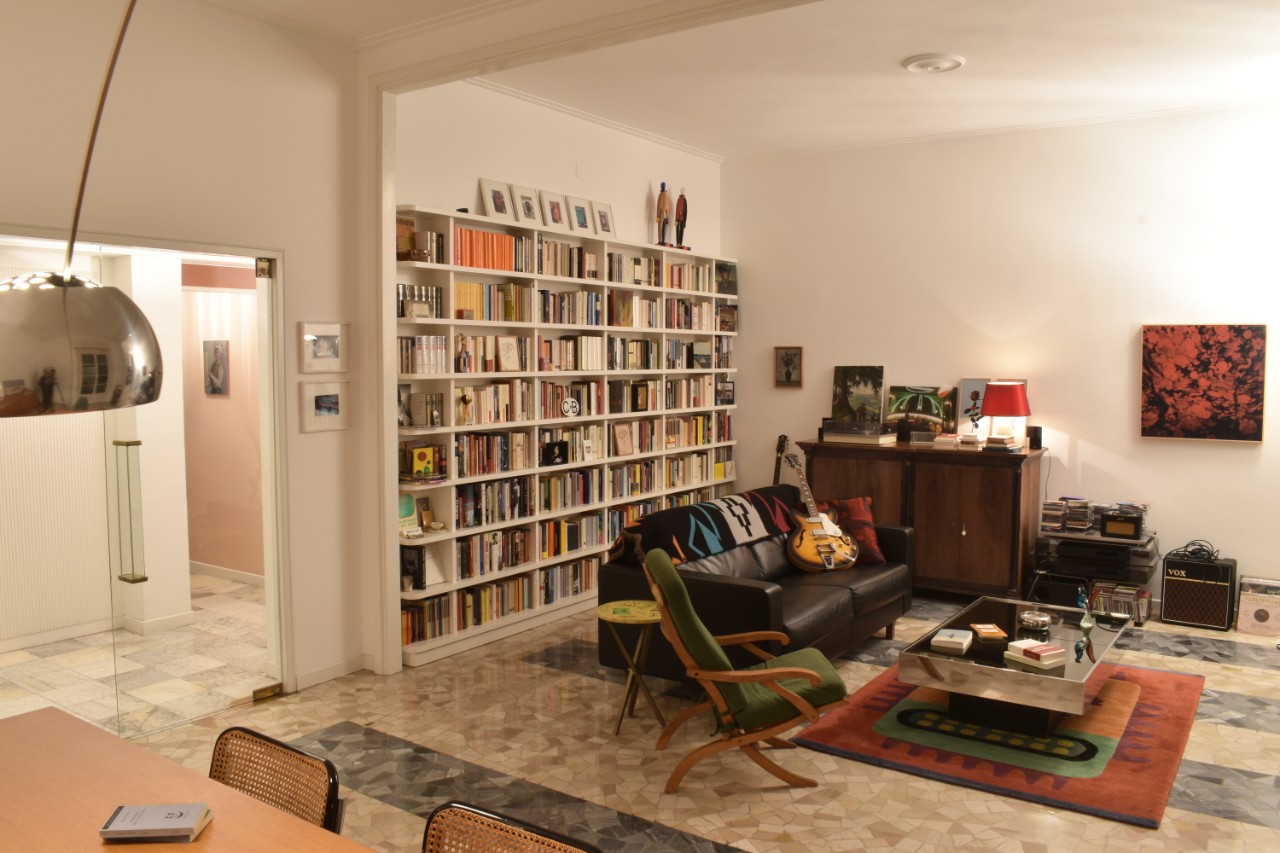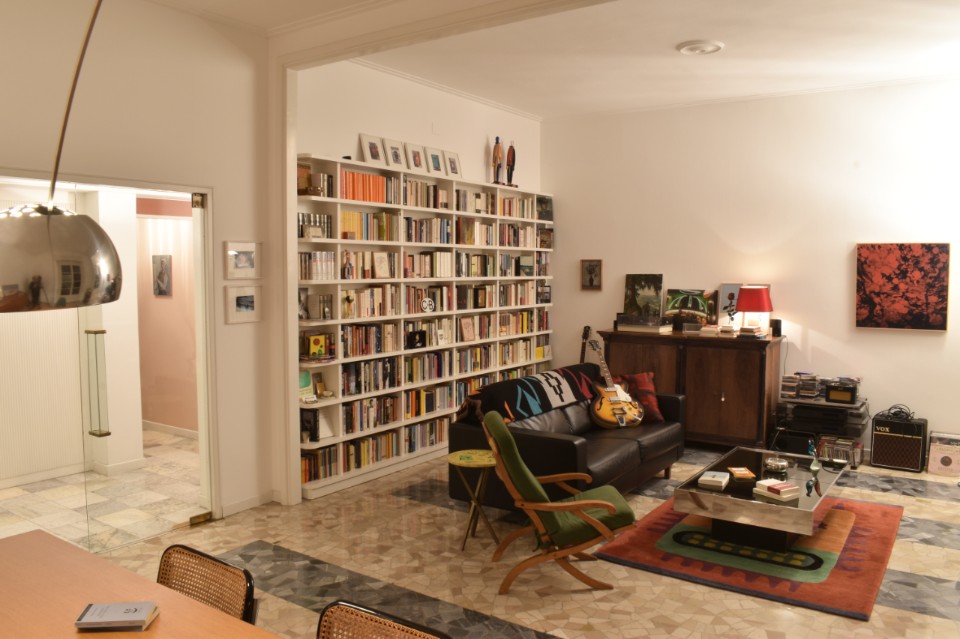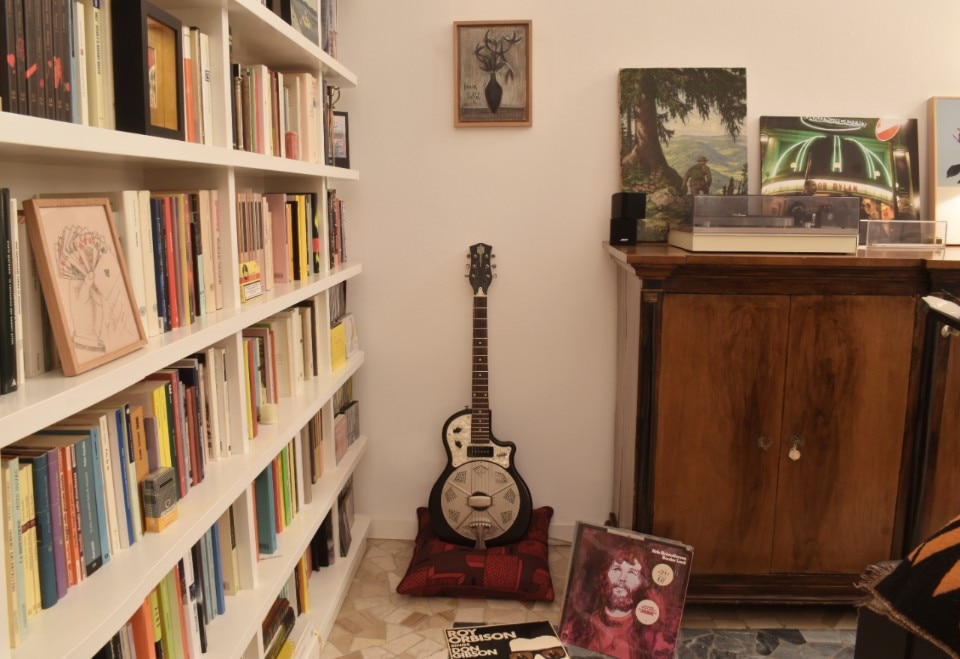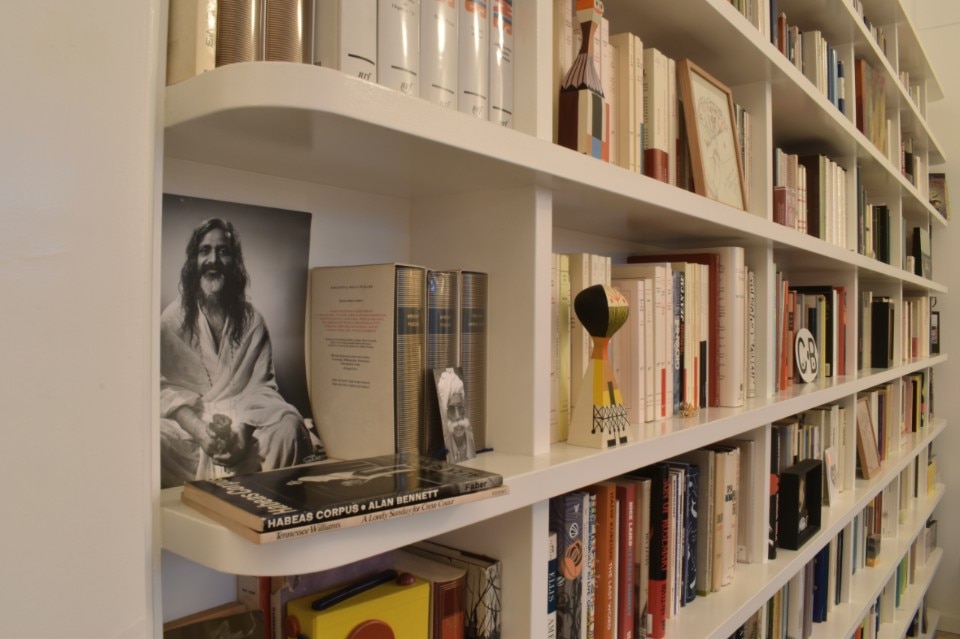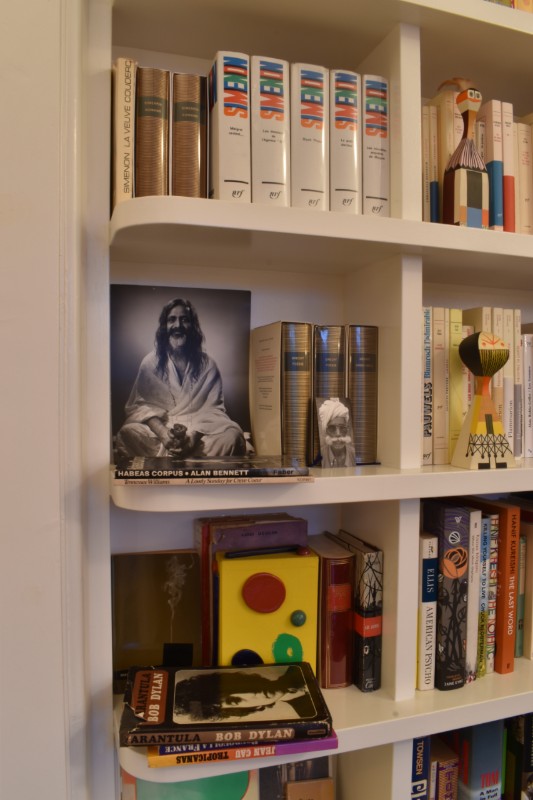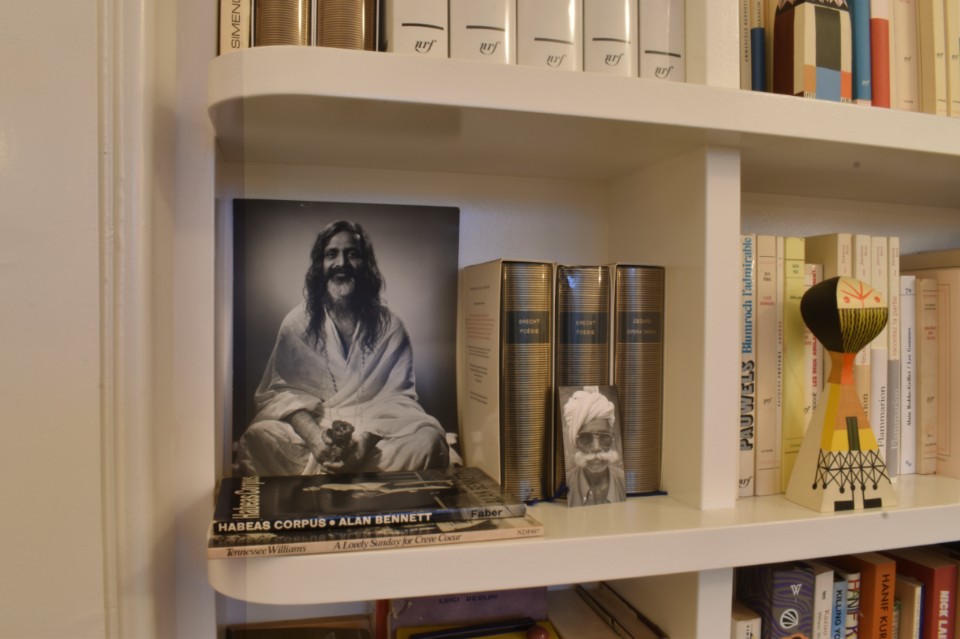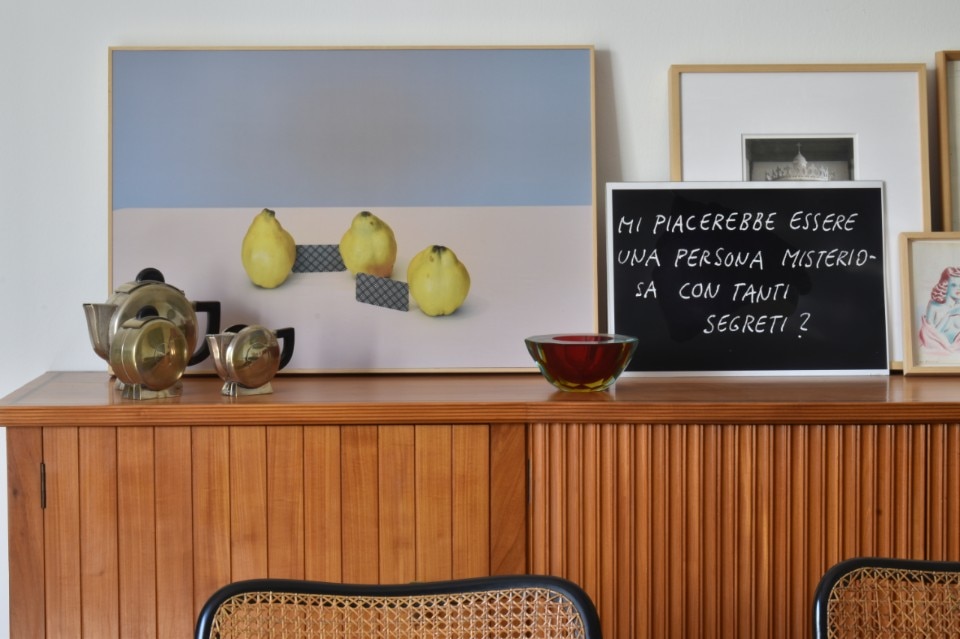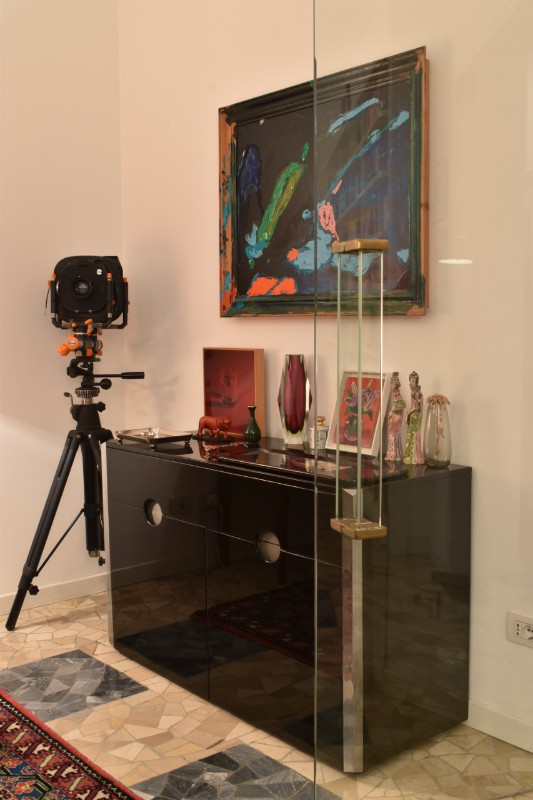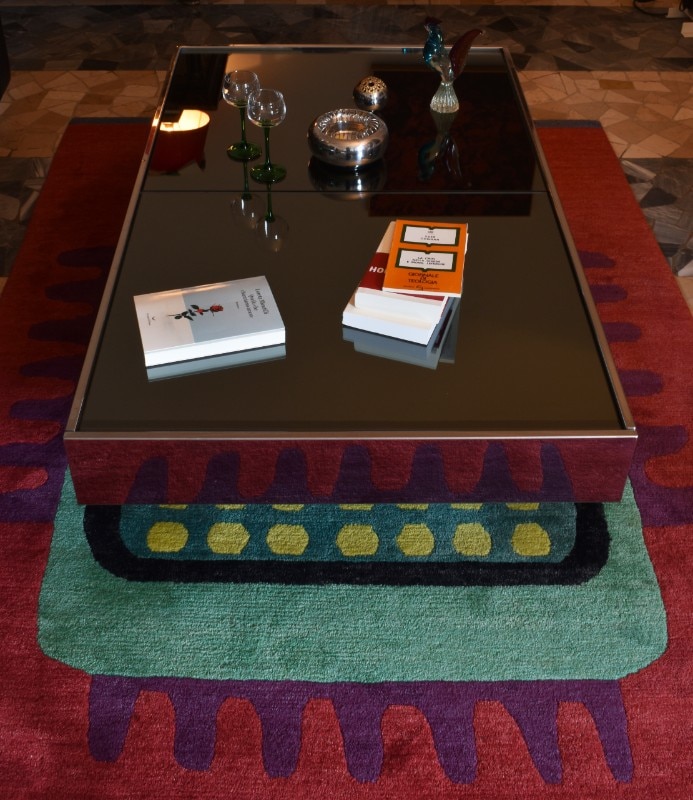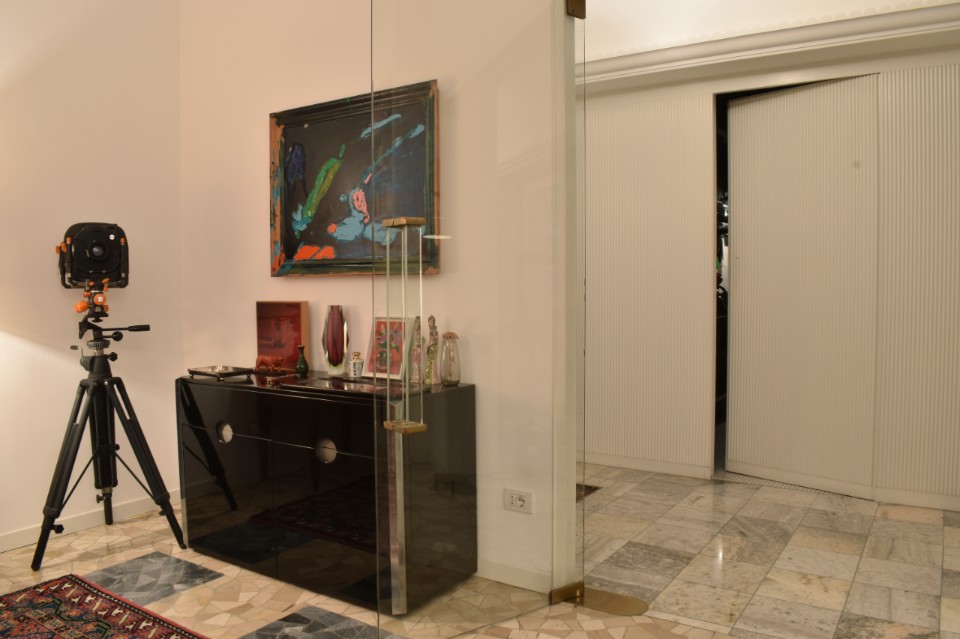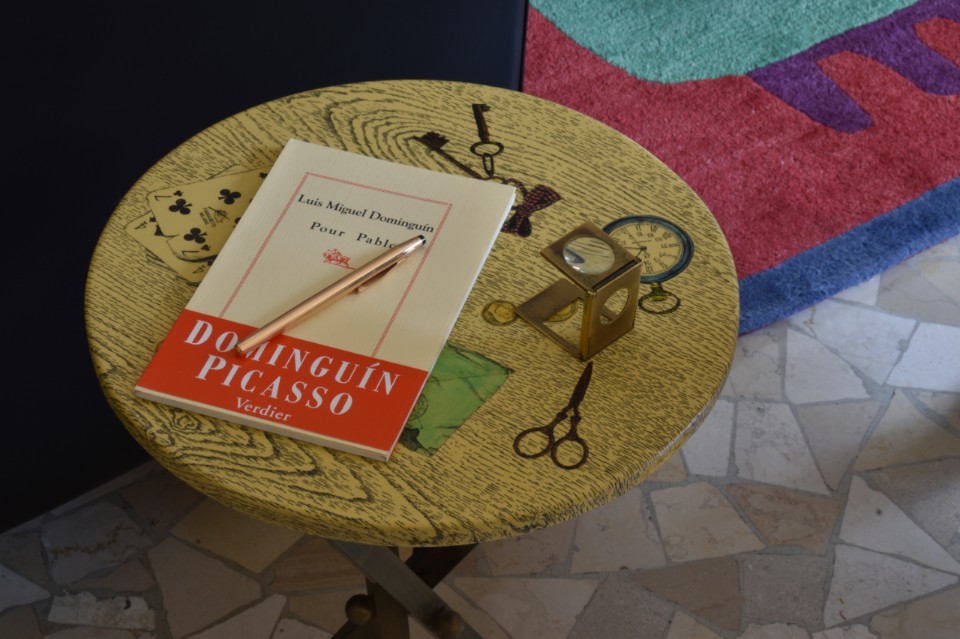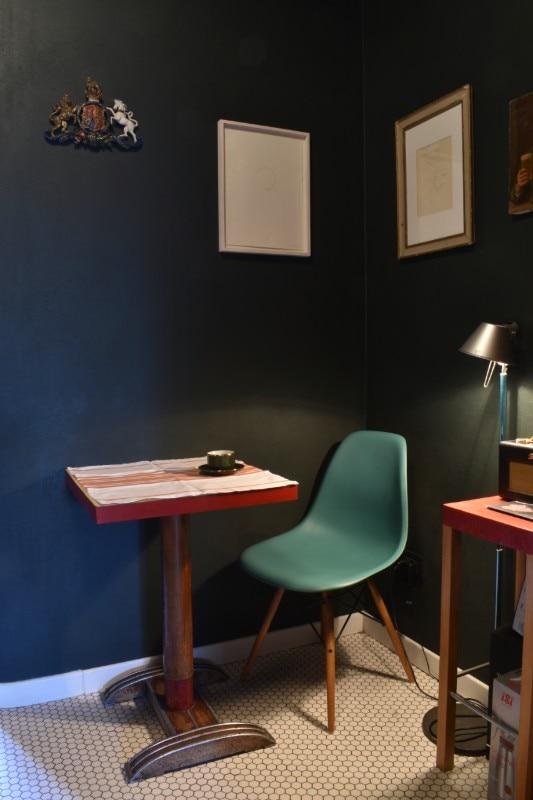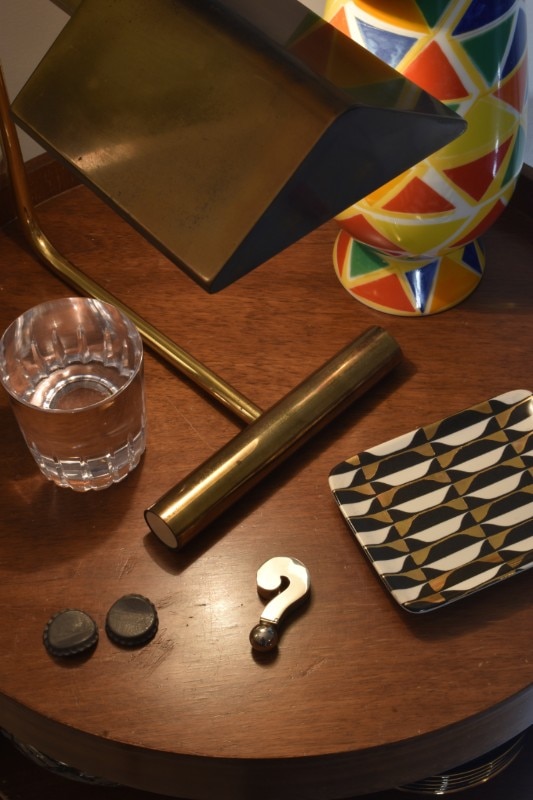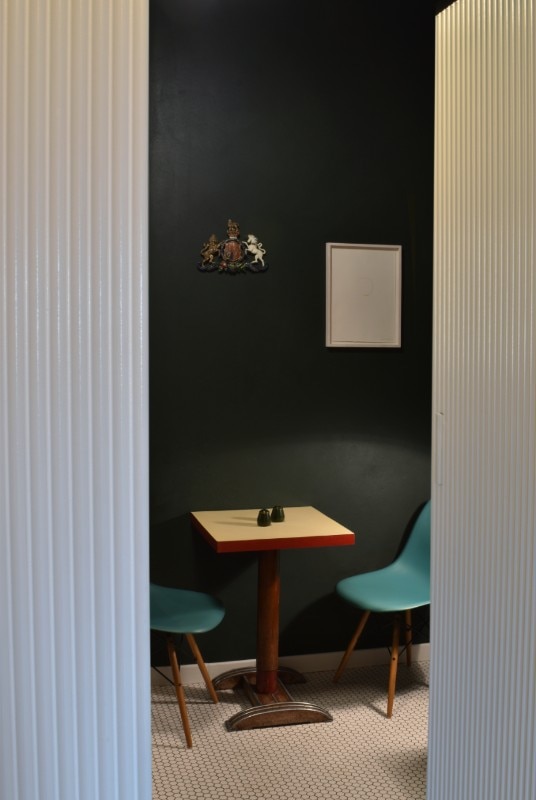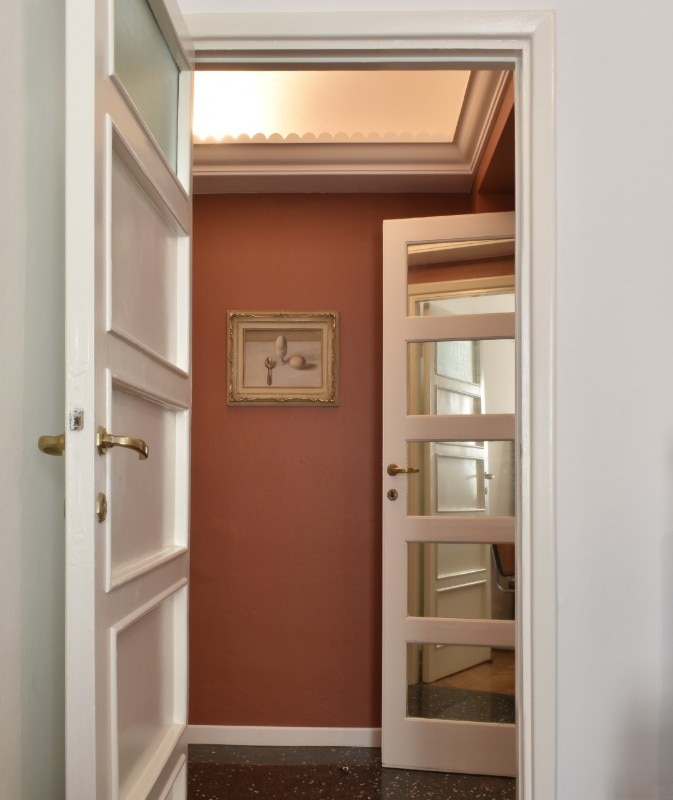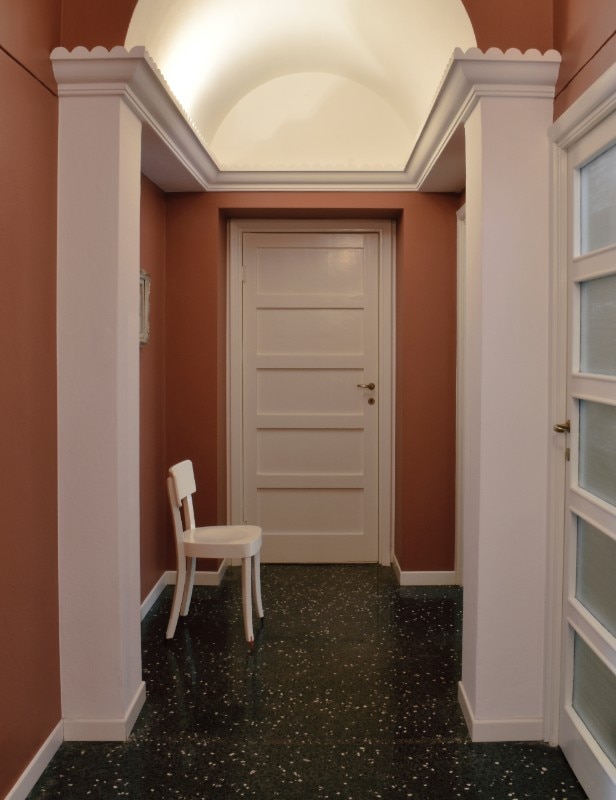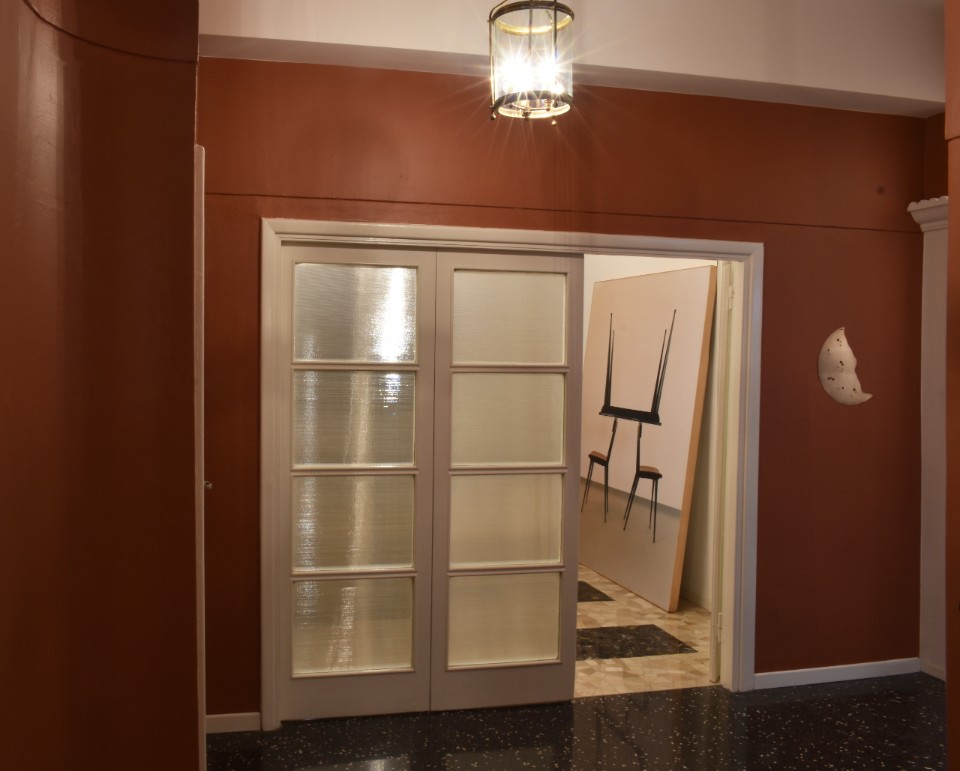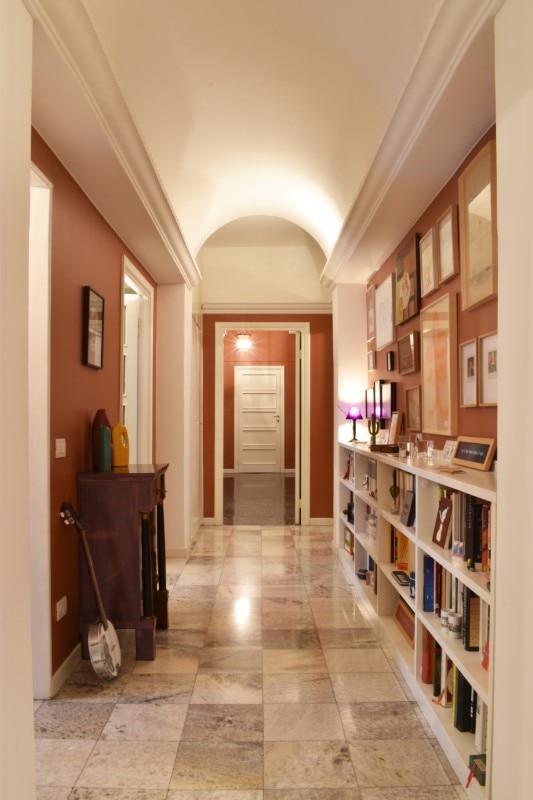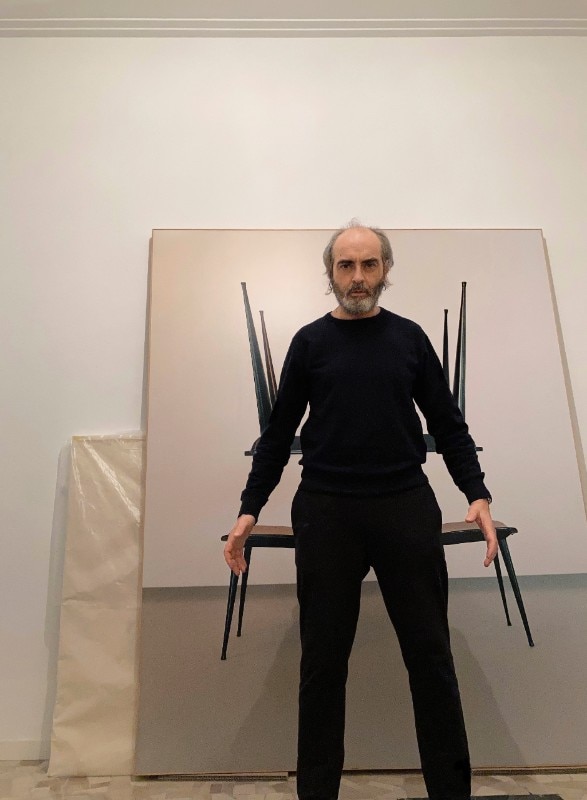This article was originally published on Domus 1061, October 2021.
“All artists work on their own, for themselves. I am not interested in participating in the cultural debate other than with my works. I do not feel willing to believe in consultations as a means to intimately and profoundly understand the reasons of others. Perhaps this is why I may often appear very conciliatory. I lock myself in at home to escape from the information flow of reality. It’s too much information – sensible, perfectly necessary, and stimulating information – yet useless and generating an unbearable buzz. So I start from myself, from my spaces, my objects, my interests with which I was born and that obsess me to this day”.
The house where Carlo Benvenuto seeks refuge from the endless distractions of the city is inside a building in Milan designed by Emilio Frisia not far from the Stazione Centrale. The first impression is correct: it’s the hideout of a crazed bibliophile, of a cinephile, of a music freak. At the centre of the living room, on a 1970s’ Willy Rizzo table, there sits the autobiography of Tony Visconti – Morrissey and David Bowie’sAmerican producer.
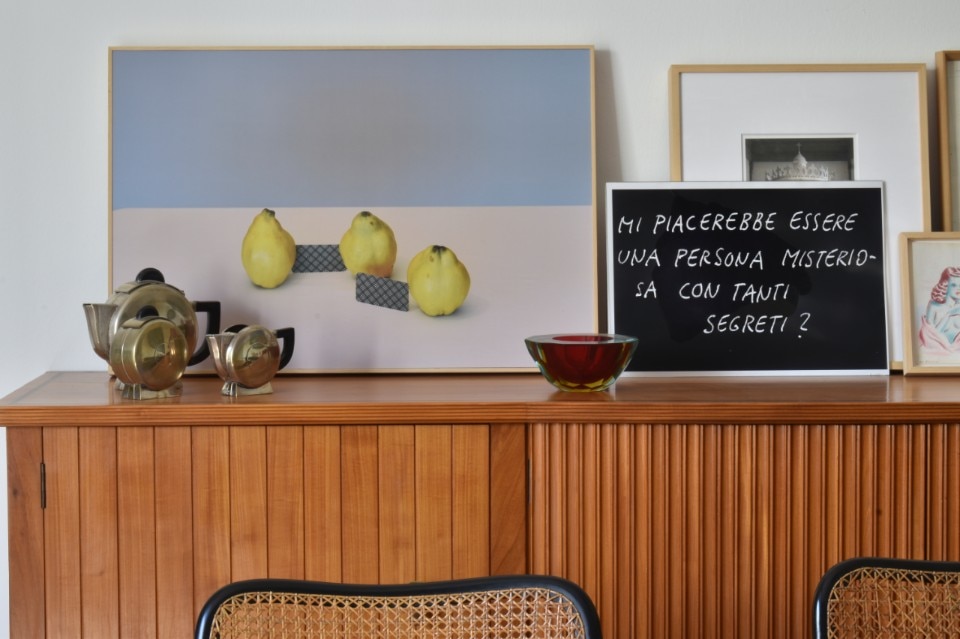
“I grew up with Bowie.At 11 I used to listen for hours on end to Heroesand Hunky Dory, a title which not surprisingly I chose for an exhibition I heldin Berlin “. ” His passion for Bowie verges on fetishism: “This is the banjo you see on the cover of his album Baal ”. Then it’s vinyl records: “This is a numbered first edition of the Beatles’ White Album . The all-white cover is by Richard Hamilton. It’s a reaction to Peter Blake’s super coloured Sgt. Pepper cover”. I spot a Frank Sinatra rarity, Watertown , a concept album produced with Bob Gaudio, one of the four members of the Four Seasons. Benvenuto delights me by playing An American Prayer by The Doors. “It’s a posthumous album, from 1978. Jim Morrison had died seven years earlier, leaving poems which the other members of the band reworked composing the music”. I notice a couple of collectible guitars: a National Resolectric used by Will Oldham and the Epiphone Casino Paul McCartney played on his solo debut. I cannot but stop and admire the works of the many artists who inhabit Benvenuto’s home.
In one corner of the living room there is a small recent painting by Salvo, a Fornasetti pistol, a late-1980s’ Schifano, a Peter Blake multiple, a painting by folk singer Daniel Johnston, a 1930s’ drawing by Karl Hubbuch, a Joe Colombo Fatif view camera, an oil on panel by Bernard Buffet (“in the 1950s he rivalled Picasso, but then fell into oblivion”), and a Fischli & Weiss from the Questions series . Moving into the corridor, there are other surprises to be found. Two Araki polaroids, a couple of works by Gavin Turk and Jonathan Monk (“Boetti-like”), a painting by Nathalie du Pasquier, an oil on panel by Ugo Celada da Virgilio (“who has always been associated with magic realism and Donghi’s work), and two autographs by Silvan the magician (“I love tacky”).
Of note, next to the bookcase, is a photograph by the Tim Noble & Sue Webster duo (capturing Bob Dylan leaving the Brixton Academy after a concert) and a work by the Austrian collective Gelitin.
Benvenuto is an omnivorous reader, but with his own predilections. He is fond of Michel Houellebecq (“a very lucid author”), Ned Rorem and his Parisian diaries, Yukio Mishima’s Gallimard NRF series (“my favourite is Le marin rejeté par la mer , if only because in the film version the protagonist is played by Kris Kristofferson”).
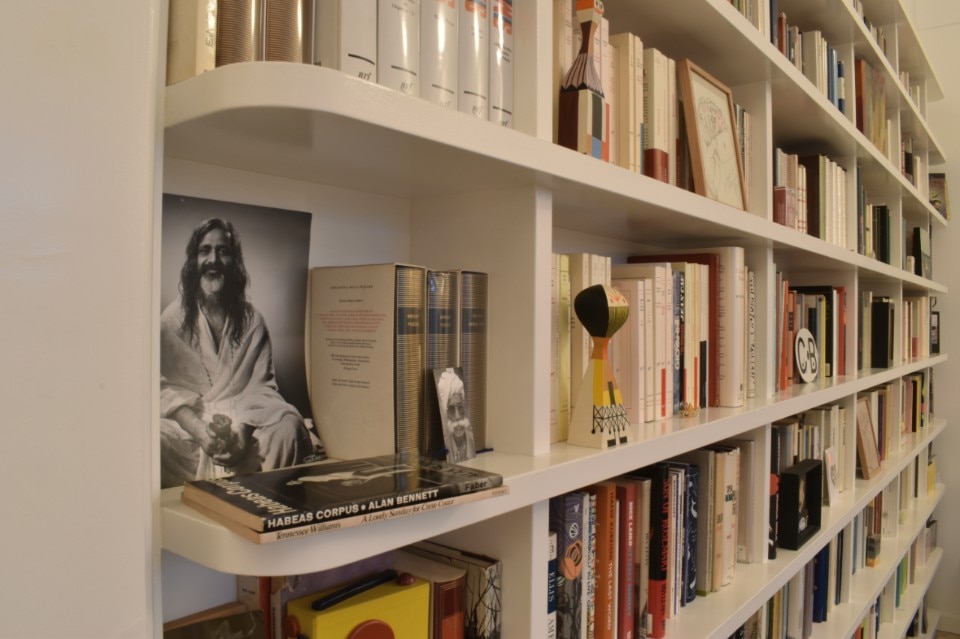
, David Goodis and his Tirez sur le pianist , Jean Cau and his bullfighting diary Les oreilles et la queue (“I am fascinated by the liturgy of bullfighting, and the superhuman energy of bullfighters”). I’m enraptured by two early 1980s’ Black Sparrow Press John Fante books and by the 1950s’ Putnam Nabokovs (“Fuoco Pallido – Pale Fire” – is also the title Benvenuto chose for an important exhibition at Emilio Mazzoli’s). The black and orange cover of a book I do not know grabs my attention. “It’s The Theatre of Revolt, by Robert Brustein. I only picked it up because it appears in a Rosemary’s Baby scene. Sometimes my choices are guided by purely aesthetic criteria”. Carlo Benvenuto’s universe reminds me of Wes Anderson’s. “Actually, I am fond of the other Anderson, Lindsay. The one who railed against judges and the establishment. The director of If and O Lucky Man! with the amazing performance of Malcolm McDowell”.
Just before I take my leave, I notice a picture that Benvenuto’s aficionados are familiar with: an essential Morandian picture with three quinces. By the way, what’s the title of this work? “All my works are untitled. The image must be freed. I hate captions and the infantile chemistry of some titles that added to the work should deliver the effect. A work of art is what it is. What it must be. A title is an orthopaedic aid to prop up a work that otherwise would not stand on its own”.
- Opening image :
- The living room of Carlo Benvenuto. Photo Carlo Benvenuto


